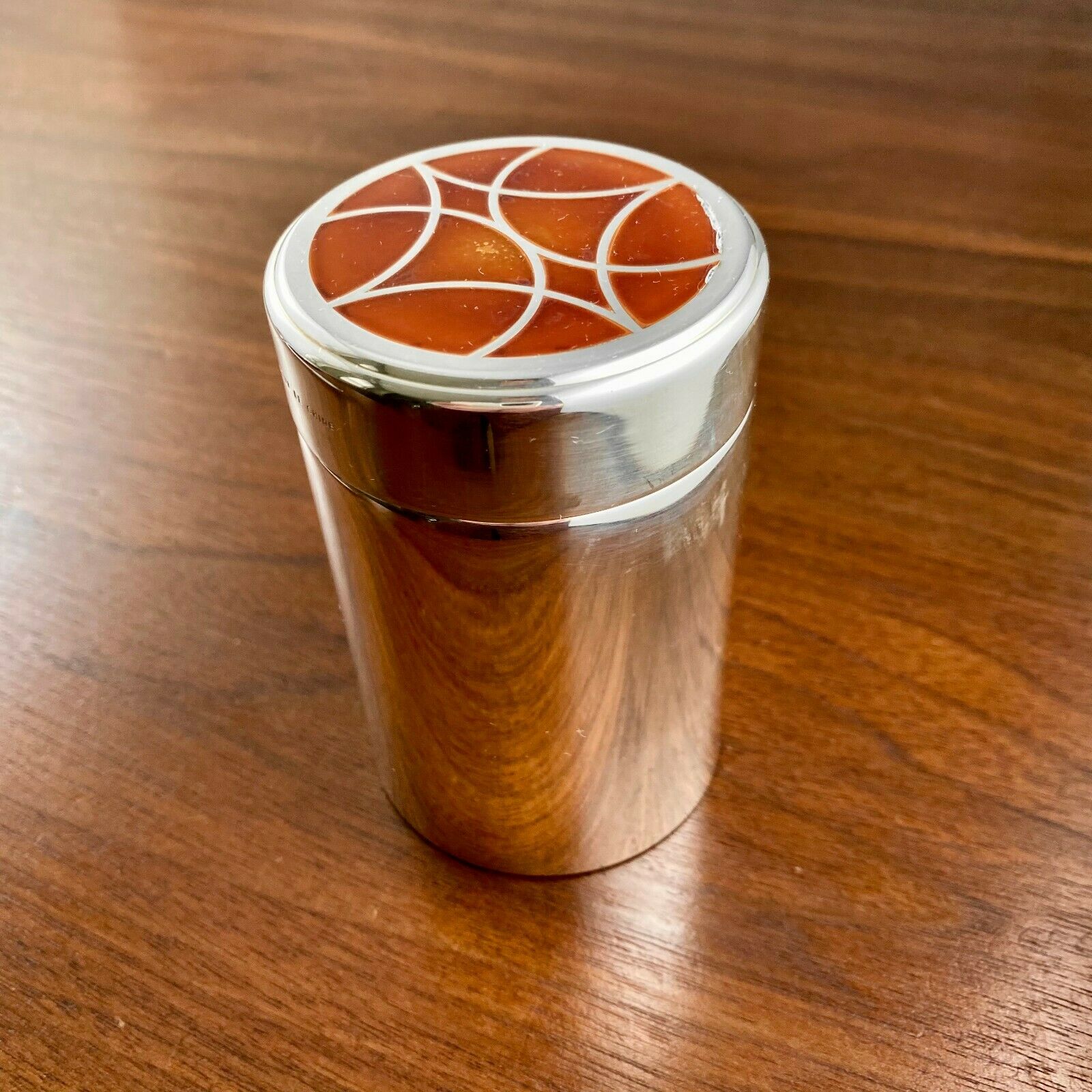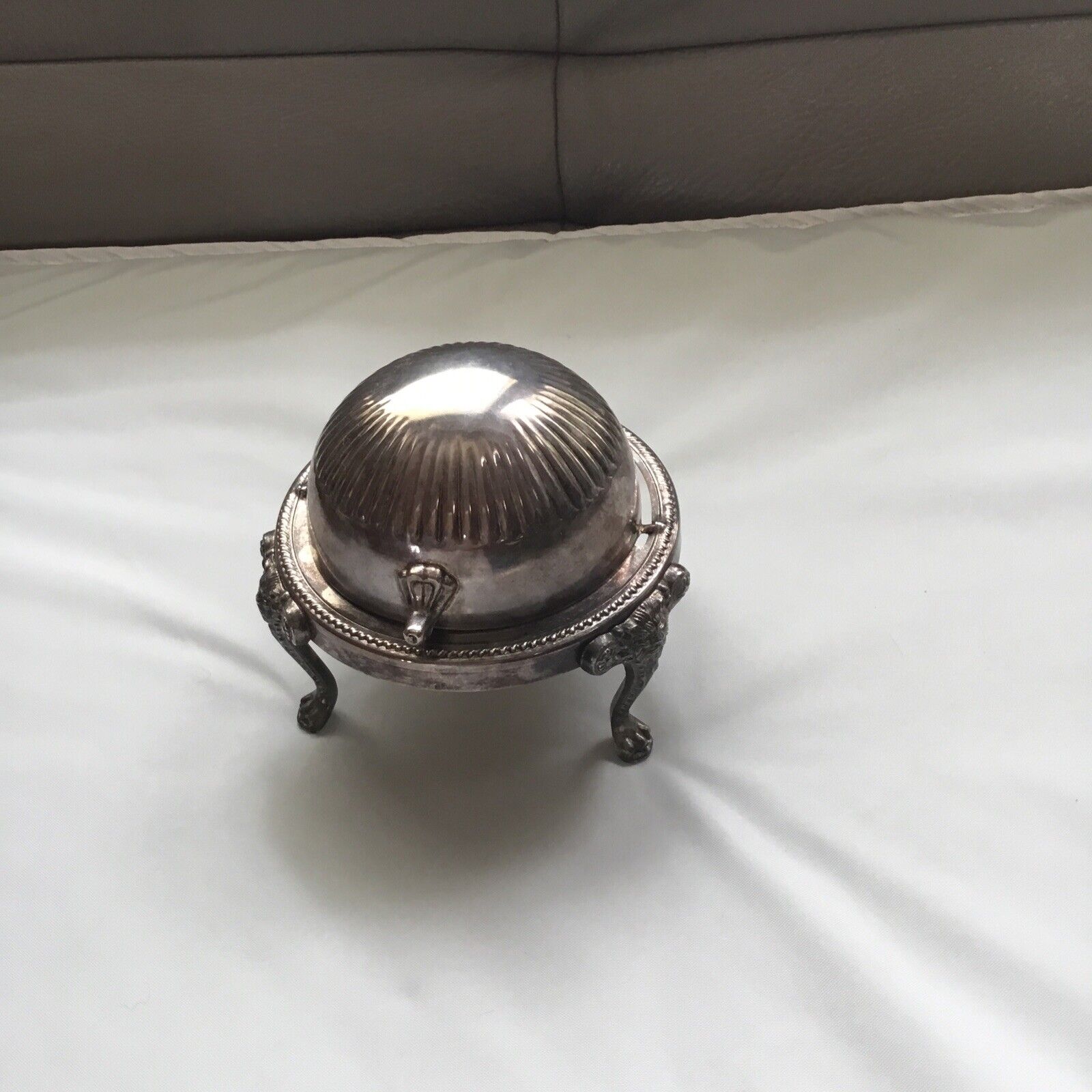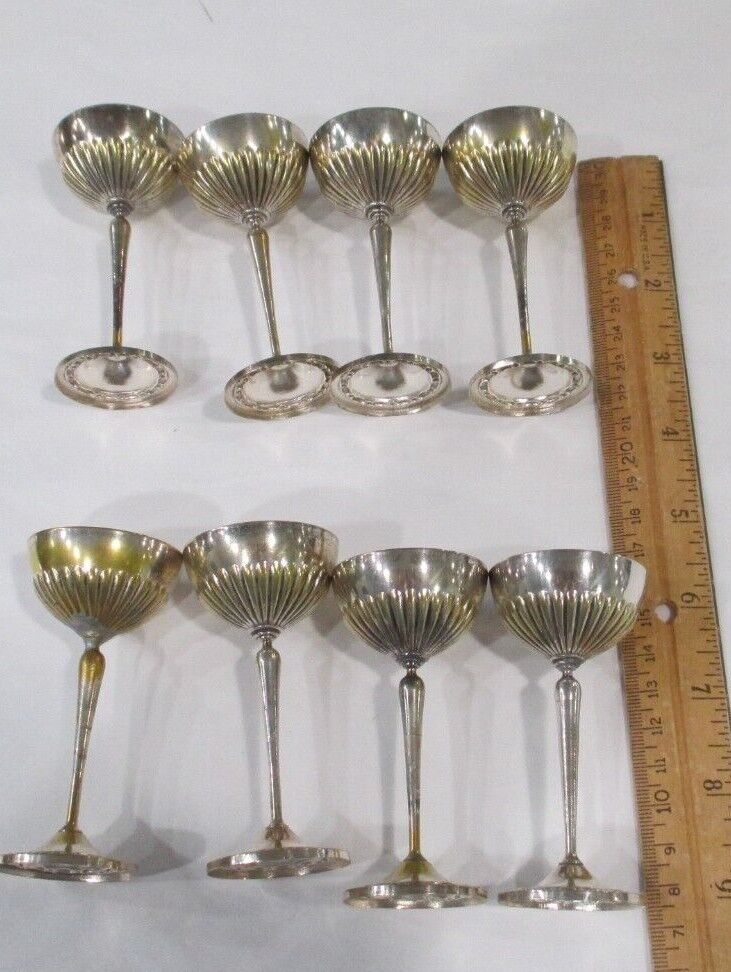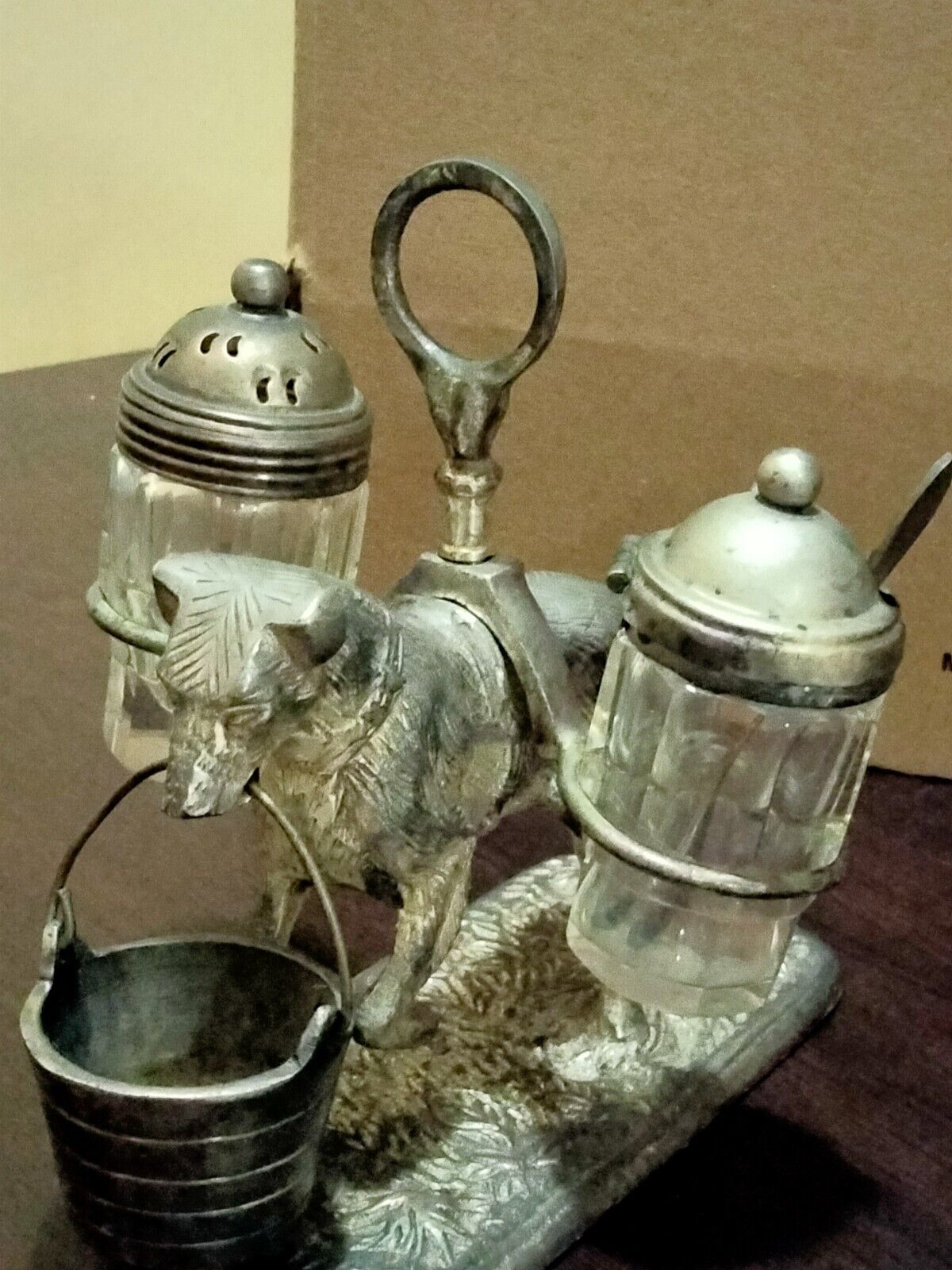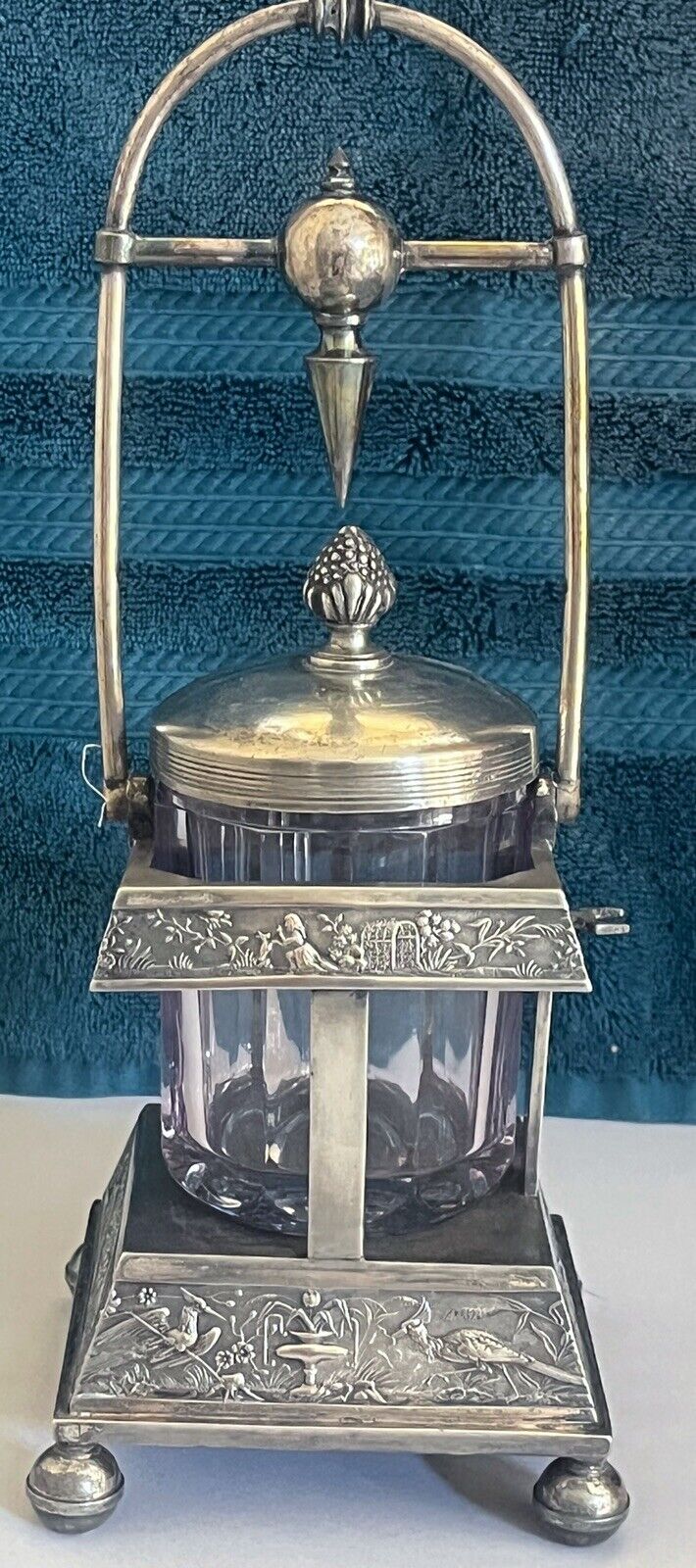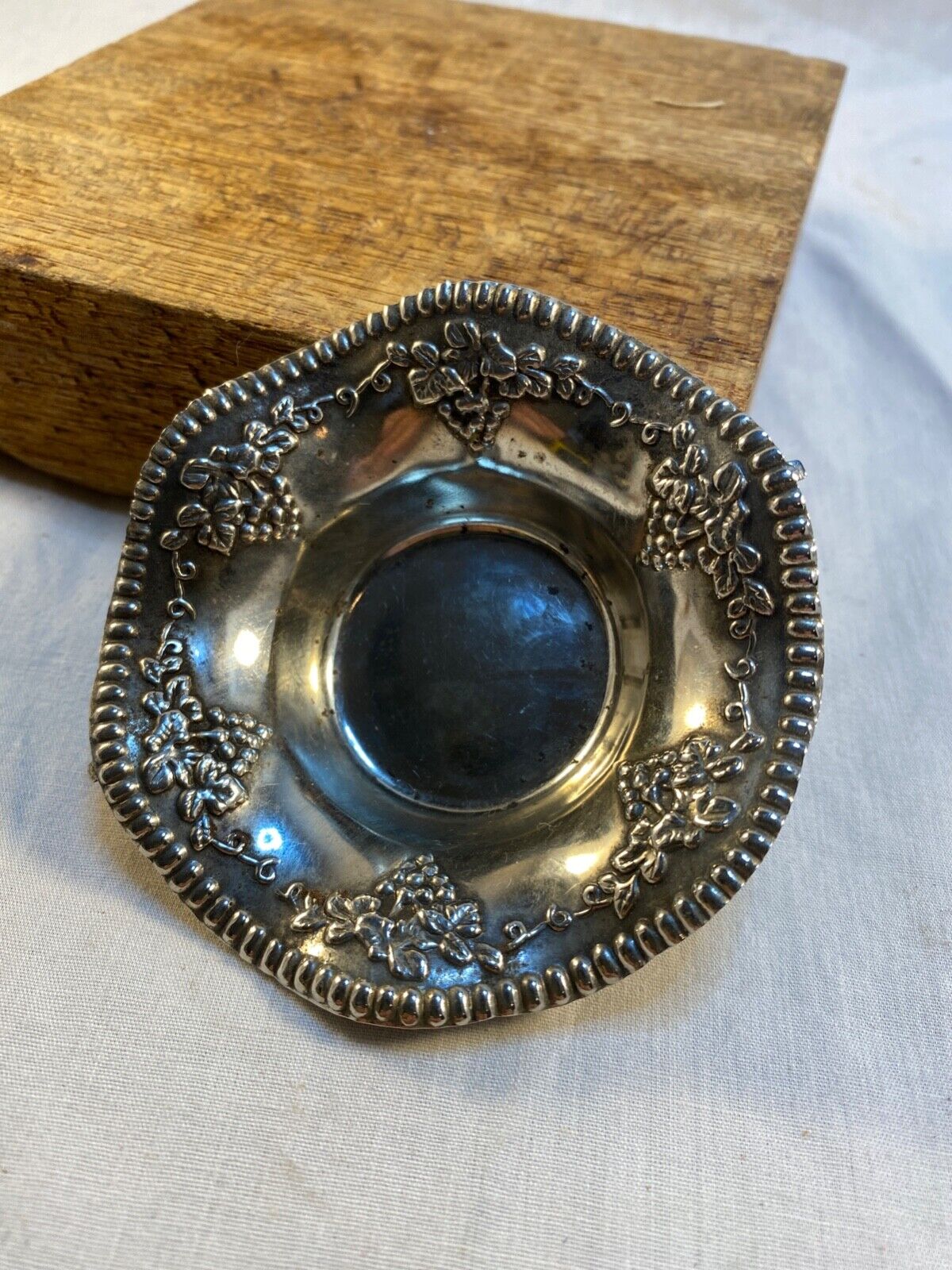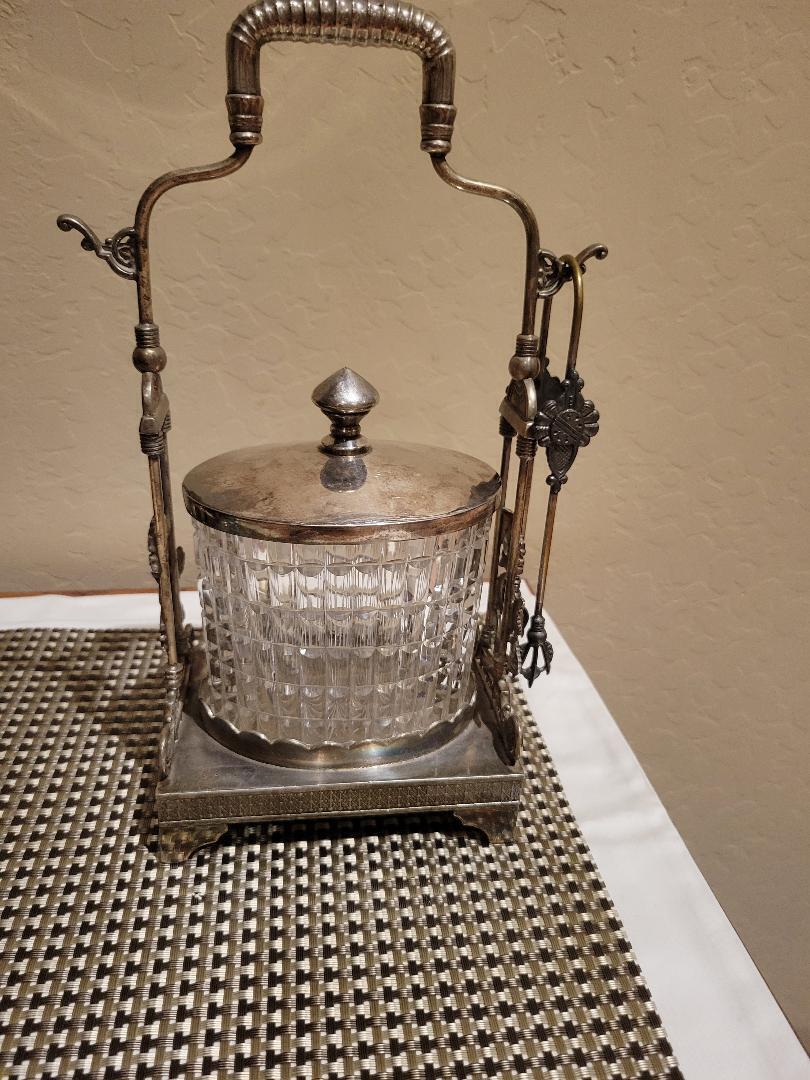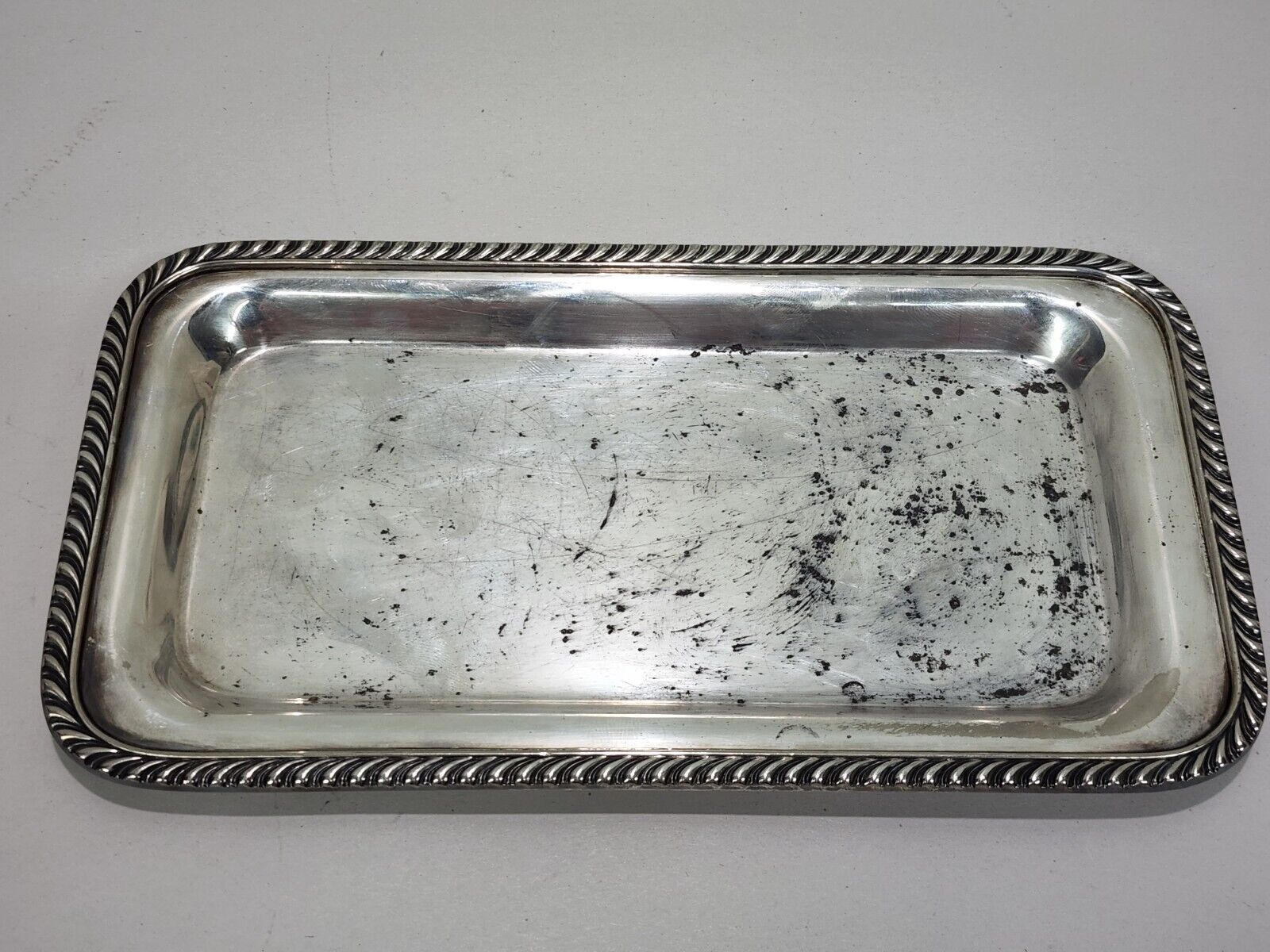-40%
WMF Silver Plated Egg Cooker Boiler Art Craft Glass Domed Lid Ostrich mark RARE
$ 132
- Description
- Size Guide
Description
Very rare silver plated 4-egg poacher with glass domed lid crafted by WURTTEMBERGISCHE METALLWAREN FABRIK (WMF) of Germany in the Arts and Crafts style. The exterior has a beautiful antique patina and has been left unpolished, but the interior is bright and shiny. The 2-piece base measures 5-7/8" diameter x 2-3/8" tall. The glass on the domed lid is 1/8" thick and measures 3.25" tall (including knob). There are no dents or deep marks on the silver plating, but there are some minor surface scratches. The heavy glass cloche has one chip on the inside under the knob. (See last 2 photos). The chip does not go through to the outside surface. Overall, this is an amazing example of antique WMF Arts and Crafts hollow Ware!The markings: it is stamped "WMF/G+N+I/O+g". The running ostrich mark over "WMF/G" inside of the rhombus with a half-lined beehive dates this piece to circa 1925. Silver plated products with such a mark are extremely rare.
The fraction "I/O" equates to the normal thickness of silver deposited onto the surface of the base metal.
The one-letter inscription "N" means that nickel silver (Neusilber in German) was used as a base metal.
The inscription "g" means "vergoldet" in German or "gilt" in English.
WMF is the abbreviation for Württembergische Metallwarenfabrik, which in English means Wurtemberg Metalware Factory. WMF was created in 1880 after the successful merger of two Wurtemberg foundries, the Geislingen factory belonging to Daniel Straub (Straub & Sohn) and the Esslingen factory of Alfred Ritter (A. Ritter & Co.). The first foundry was commercially more successful, while the second one was using a more advanced technology of galvanic silver deposition, which was first applied in Esslingen by the German chemist Carl Haegele (in 1871), the brother-in-law of Alfred Ritter. In 1881, after the retirement of Daniel Straub, Carl Haegele became the managing director of WMF. In the same year, the Esslingen factory was dismantled and its equipment was incorporated into the Geislingen foundry. During the next thirty years WMF experienced a period of rapid expansion, which lasted until the beginning of the World War in 1914. At the turn of the century, the factory in Geislingen employed 3,000 workers. By 1910, this number had already grown to 4,000, making WMF the largest company in Wurttemberg at this time. Sales catalogues were printed in twelve languages and subsidiary companies in London, Warsaw and Vienna opened up export sites.









